- Home
- Isaac Asimov
Asimov's New Guide to Science Page 17
Asimov's New Guide to Science Read online
Page 17
Mars is farther from the Sun than Earth is, and gets less intense sunlight. It is a small planet, only 4,220 miles in diameter (a little over half that of Earth), and has a very thin atmosphere so that it does not reflect much of the light it does get. On the other hand, it has one advantage compared with Venus. When Venus is closest to us, it is between us and the sun, and we see only its dark side. Mars, however, when it is closest to us, is beyond us, being farther from the sun, and we see its sunlit side (a kind of “full Mars”), which adds to its brightness. At its very brightest, Mars has a magnitude of −2.8, which makes it, at that time, brighter than any object in the sky except the sun, the moon, and Venus. That brightness is only attained every thirty-two years, however, when Mars is unusually close. When it is in that part of its orbit that places it on the other side of the sun from us, it is quite far away and is only as bright as a reasonably bright star.
From 1580 on, the Danish astronomer Tycho Brahe made careful observations of Mars (without a telescope, it not yet having been invented) in order to study its movements and make more accurate predictions of its future positions. After Tycho died, his assistant, the German astronomer Johann Kepler used those observations to work out the orbit of Mars. He found he had to abandon the notion of circular orbits, which astronomers had held for 2,000 years, and, in 1609, showed that the planets had to move in elliptical orbits. The Keplerian version of the planetary system still holds today and will undoubtedly hold, in essence, permanently.
Another basic contribution of Mars to the plan of the solar system came in 1673 (as I stated earlier) when Cassini determined the parallax of Mars and, for the first time, got an idea of the true distances of the planets.
Thanks to the telescope, Mars became more than a point of light. Christian Huyghens, in 1659, observed a dark, triangular marking which he named Syrtis Major (that is “large bog”). By following this marking, he was able to show that Mars rotated on its axis in about 24½ hours. (The present-day figure is 24.623 hours.)
Mars, being farther from the sun than Earth is, has a longer orbit and travels more slowly under the sun’s gravitational pull. It takes it 687 earth-days (1.88 earth-years) to complete a revolution, or 668.61 Mars-days.
Mars is the only planet we know that has a rotation period so close to that of Earth. Not only that, but in 1781, William Herschel showed that the Martian axis was tipped very much in the way that Earth’s is. Earth’s axis is tipped 23.45 degrees from the vertical, so that the Northern Hemisphere has spring and summer when the North Pole is slanted toward the sun, and fall and winter when the North Pole is slanted away; while the Southern Hemisphere has its seasons reversed, because the South Pole slants away from the sun when the North Pole slants toward it; and vice versa.
The Martian axis is tipped 25.17 degrees from the vertical, as Herschel could tell by observing closely the direction in which the markings on Mars move as the planet turns. Thus, Mars has seasons just as Earth does, except that each season is almost twice as long as on Earth and is, of course, colder.
Another similarity showed up in 1784, when Herschel noted that Mars has ice caps at its north and south pole. On the whole, Mars is more like Earth than any other world we have ever observed in the sky. Unlike the moon and Mercury, Mars has an atmosphere (first observed by Herschel) but not a thick, cloud-laden atmosphere as Venus has.
The similarity of Mars to Earth does not extend to satellites. Earth has a large satellite, the moon, but Mercury and Venus have no satellites at all. Mars, too, seemed to have no satellites at first. At least, more than two and a half centuries of telescopic observation revealed none.
In 1877, though, when Mars was going to make one of its close approaches to Earth, the American astronomer Asaph Hall decided to search the Martian neighborhood for any sign of satellites. Since none had yet been found, he felt any had to be very small and very close to Mars and were probably obscured by the planet’s light.
Night after night he observed; and on 11 August 1877, he decided to give up. His wife Angelina Stickney Hall urged him to try one more night—and on that one more night, he did discover two tiny satellites close to Mars. He named them Phobos and Deimos after the name of the sons of Mars in the myths. (The names mean “fear” and “terror,” appropriate for the sons of the war god.)
Phobos, the inner of the two satellites, is only 5,810 miles from the center of Mars and is, therefore, only 3,700 miles above the Martian surface. It completes one turn about its small orbit in 7.65 hours—or less than one-third the time it takes Mars to turn on its axis, so that as Phobos speeds along, it continually overtakes the Martian surface. Phobos therefore rises in the west and sets in the east when observed from Mars. Deimos, the farther of the satellites, is 14,600 miles from the center of Mars and completes one revolution about the planet in 30.3 hours.
As the satellites were too small to show up as anything but points of light in even the best telescopes, for a century after their discovery, nothing was known about them but their distance from Mars and times of revolution. From the distance and motion of the satellites, it was easy to calculate the strength of Mars’s gravitational field and, therefore, of its mass. Mars turned out to have almost exactly one-tenth the mass of the Earth, and its surface gravity was just three-eighths that of Earth. A person weighing 150 pounds on Earth would weigh 56¼ pounds on Mars.
Nevertheless, Mars is a distinctly larger world than the moon. Mars has 8.7 times the mass of the moon, and the surface gravity on Mars is 2.25 times that on the moon. Roughly speaking, Mars is just about intermediate in these respects between the moon and Earth. (Venus and Mercury, having no satellites, could not have their mass determined so easily. We now know Venus’s mass to be four-fifths that of Earth and Mercury’s to be one-eighteenth that of Earth. Mercury, with only about half the mass of Mars, is the smallest of the eight major planets.)
Knowing the size and the mass of a world, we can easily calculate its density. Mercury, Venus, and Earth all have densities that are more than five times the density of water: 5.48, 5.25, and 5.52, respectively. These are more than would be expected if the worlds were built up of solid rock, and each planet is therefore thought to have a metallic core. (This subject will be taken up in more detail in the next chapter.)
The moon has a density 3.34 times that of water and may be made up of rocky material through and through. Mars is intermediate. Its density is 3.93 times that of water, and it may have a very small metallic core.
MAPPING MARS
It was natural that astronomers would try to map Mars, to draw the dark and light pattern of the spots and patches on its surface. This could be done well for the moon, but Mars, even at its closest, is 150 times as far from us as the moon is, and has a thin, but obscuring atmosphere, which the moon lacks.
In 1830, however, a German astronomer, Wilhelm Beer, who had been mapping the moon in detail, turned his attention to Mars. He produced the first map of Mars that showed a pattern of dark and light. He assumed the dark areas to be water and the light areas land. The trouble was that other astronomers tried their hand at map making also, and each astronomer came up with a different map.
The most successful of the map makers of Mars, however, was Schiaparelli (who was later, and wrongly, to fix the rotation of Mercury at eighty-eight days). In 1877, during the close approach of Mars that made it possible for Hall to discover its two satellites, Schiaparelli drew a map of Mars that looked altogether different from anything that had been drawn before. This time, though, astronomers agreed. Telescopes had been steadily improving, and now they all saw more or less what Schiaparelli saw, and the new map of Mars lasted for nearly a century. To various regions of Mars, Schiaparelli gave names drawn from the mythology and geography of ancient Greece, Rome, and Egypt.
Schiaparelli, in observing Mars, noted that there were thin dark lines connecting larger dark areas in the way that straits or channels connect two seas. Schiaparelli called these lines channels, making use of the Italian word
canali for the purpose. The word was mistranslated as canals in English, and that made all the difference: channels are a natural phenomenon, while canals are man-made.
Schiaparelli’s observations at once created a new interest in Mars. The planet had long been thought of as very Earth-like, but it was smaller than Earth, with a weaker gravitational field. Mars might not have been able to hold on to much of an atmosphere or to much of its water, so that it might have been drying out over many millions of years. Any intelligent life that might have evolved on Mars would be fighting to survive desiccation.
It became easy for people to think that not only was there intelligent life on Mars, but that it might display a more advanced technology than our own. The Martians might have built canals to bring water from the icecaps down to their farms in the milder equatorial regions.
Other astronomers began to detect the canals, and the most enthusiastic of these was the American Percival Lowell. A rich man, he opened a private observatory in Arizona in 1894. There in the clean, mile-high desert air, far from city lights, visibility was excellent, and Lowell began to draw maps in much greater detail than Schiaparelli had. Eventually, he plotted over 500 canals and wrote books that popularized the notion of life on Mars.
In 1897, the English science-fiction writer Herbert George Wells published a serialized novel, War of the Worlds, in a popular magazine, and that further publicized the notion. Large numbers of people came to take life on Mars for granted; and on 30 October 1938, Orson Welles produced a radio dramatization of War of the Worlds, with the Martians landing in New Jersey, so realistically that large numbers of people, imagining the show to be an actual news report, fled in terror.
Nonetheless, many astronomers denied the reality of Lowell’s canals. They could not see the canals themselves, and Maunder (who had first described the periods of sunspot lack, or Maunder minima) felt they were optical illusions. In 1913, he set up circles within which he put smudgy irregular spots and then placed schoolchildren at distances from which they could barely see what was inside the circles. He asked them to draw what they saw, and they drew straight lines very much like Lowell’s canals.
Furthermore, straightforward observation seemed to lessen the similarity of Mars to Earth. In 1926, two American astronomers, William Weber Coblentz and Carl Otto Lampland, managed to take measurements of the surface temperature of Mars. It was colder than had been thought. During the day, there was some indication that the Martian equator might be fairly mild at perihelion time, when Mars was closest to the sun, but the Martian night seemed everywhere to be as cold as Antarctica at its coldest. The difference between day and night temperatures made it seem that Mars’s atmosphere was thinner than had been thought.
In 1947, the Dutch-American astronomer Gerard Peter Kuiper analyzed the infrared portion of the light arriving from Mars and concluded that the Martian atmosphere was chiefly carbon dioxide. He could find no sign of nitrogen, oxygen, or water vapor. The chance of complex life forms anything like those on Earth seemed dim indeed. Nevertheless, a nagging belief in Martian vegetation and even in Martian canals lingered.
THE MARS PROBES
Once rockets began to rise into and beyond Earth’s atmosphere, however, hopes for a solution to the century-old problem rose with them.
The first successful Mars probe, Mariner 4, was launched on 28 November 1964. On 14 July 1965, Mariner 4 passed within 6,000 miles of the Martian surface. As it did so, it took a series of 20 photographs, which were turned into radio signals, beamed back to Earth and there converted into photographs again. What those photographs showed were craters—no sign of any canals.
As Mariner 4 passed behind Mars, its radio signals, before disappearing, passed through the Martian atmosphere, indicating that the Martian atmosphere is thinner than anyone had supposed: it is less than 1/100 as dense as Earth’s.
Mariner 6 and Mariner 7, more elaborate Mars probes, were launched on 24 February and 27 March 1969, respectively. These passed within 2,000 miles of the Martian surface and sent back 200 photographs altogether. Wide portions of the surface were photographed; and it was shown that while some regions were heavily cratered like the moon, others were relatively featureless, and still others were jumbled and chaotic. Apparently Mars has a complex geological development.
However, there were no signs of canals anywhere, the atmosphere was at least 95 percent carbon dioxide, and the temperature was even lower than the measurements of Coblentz and Lampland had indicated. All hope for intelligent life on Mars—or any kind of complex life—seemed gone.
More remained to be done, however. The next successful Mars probe was Mariner 9, which was launched on 30 May 1971. It reached Mars on 13 November 1971 and, instead of passing it, went into orbit about it. It was fortunate that it did so, for midway on its journey to Mars, a planet-wide duststorm rose and, for many months, photographs would have yielded nothing but a haze. In orbit, the probe could outwait the storm; and in December, the Martian atmosphere cleared, and the probe got to work.
It mapped all of Mars as clearly as the moon was mapped; and, after a century, the canal mystery was settled once and for all. There are no canals. Those that were “seen,” as Maunder had insisted, were the result of optical illusions. Everything was dry, and the dark areas were merely darker drifts of dust particles, as the American astronomer Carl Sagan had suggested a couple of years earlier.
Half the planet, mostly in its southern hemisphere, was cratered like the moon. The other half seemed to have had its craters obliterated by volcanic action, and some large mountains that were clearly volcanoes (though perhaps long-inactive ones) were located. The largest of these was named Olympus Mons in 1973. It reaches a height of 15 miles above general ground level, and its large central crater is 40 miles across. It is far larger than any volcano on Earth.
There is one crack in the Martian surface that might have given the illusion of being a canal. It is a large canyon, now named Valles Marineris, and is about 1,900 miles long, up to 310 miles wide, and 1¼ miles deep. It is 9 times as long as the Grand Canyon, 14 times as wide, and twice as deep. It may have been the result of volcanic action about 200 million years ago.
There are also markings on Mars that meander across the Martian surface and have tributaries strongly resembling dried river beds. Could it be that Mars is now suffering an ice age with all the water frozen into the icecaps and the subsoil? Was there a time in the reasonably recent past, and would a time come in the reasonably near future, when conditions would ameliorate, water would appear in liquid form, and rivers would flow once more? If so, might very simple forms of life still precariously exist in the Martian soil?
What was needed was a soft landing on Mars. Viking 1 and Viking 2 were launched on 20 August and 9 September 1975, respectively. Viking 1 went into orbit about Mars on 19 June 1976 and sent down a lander, which came to rest successfully on the Martian surface on 20 July. Some weeks later, Viking 2 sent down a lander in a more northerly position.
As they passed through the Martian atmosphere, the landers analyzed it and found that, in addition to carbon dioxide, there was 2.7 percent nitrogen and 1.6 percent argon. There was the merest trace of oxygen.
On the surface, the landers found the maximum daytime temperature to be −20° F. There seemed no chance that the surface temperature ever reached the melting point of ice anywhere on Mars, which meant no liquid water anywhere. It was too cold for life, just as Venus was too hot for life. Or, at least, it was too cold for any but the simplest forms of life. It was so cold that even carbon dioxide froze in the coldest regions, and it would seem the icecaps were at least partly frozen carbon dioxide.
The landers sent back photographs of the Martian surface, and analyzed the soil. It turned out that the Martian soil is richer in iron and poorer in aluminum than earthly soil is. About 80 percent of the Martian soil is an iron-rich clay, and the iron present may be in the form of limonite, an iron compound that is responsible for the color of red bricks. Mars�
��s ruddy color, which roused fear in early human beings because of the association with blood, has nothing to do with it: Mars is simply a rusty world.
Most important, the landers were equipped with small chemical laboratories capable of testing the soil to see if it would react in such a way as to make it seem that living cells were present. Three different experiments were performed; and in none were the results clear-cut. It seemed that life might conceivably exist, but real certainty was lacking. What made scientists uncertain was that analysis of the soil showed that there were no detectable quantities of organic compounds—that is, the type of compounds associated with life. Scientists were simply not ready to believe that non-organic life could be present, and the solution to the problem will have to be deferred until such time as more elaborate landers can be placed on the planet, or better yet, when human beings themselves can reach it.
THE MARTIAN SATELLITES
Originally it had not been planned to have the Mars probes make detailed studies of the small Martian satellites; but when Mariner 9 found itself in orbit about Mars with no pictures to take because of the sandstorm, its cameras were turned on the satellites. The photographs of the satellites showed them to be irregular in outline. (Astronomical objects are usually thought of as spheres, but they are spheres only if they are large enough for their gravitational fields to be strong enough to flatten any major irregularities.) In fact, each satellite looked much like a baking potato in shape and even had craters which had an uncanny resemblance to the “eyes” of potatoes.
The diameter of Phobos, the larger of the two, varied from 12 to 17 miles; and of Deimos, from 6 to 10 miles. They were merely mountains flying about Mars. In each case, the longest diameter points toward Mars at all times, so that each is gravitationally locked by Mars, as the moon is by Earth.

 The Return of the Black Widowers
The Return of the Black Widowers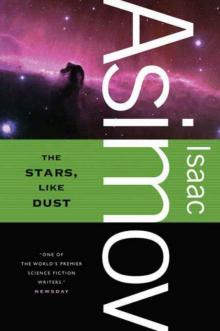 The Stars, Like Dust
The Stars, Like Dust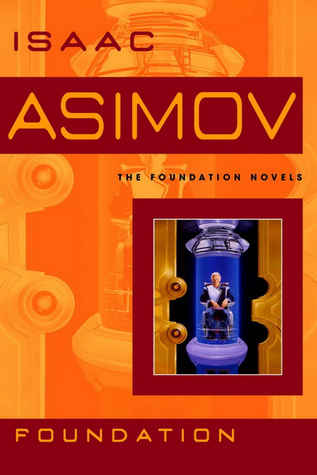 Foundation
Foundation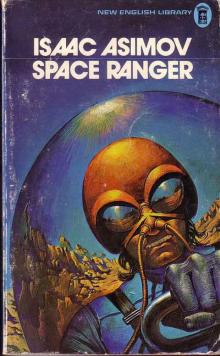 David Starr Space Ranger
David Starr Space Ranger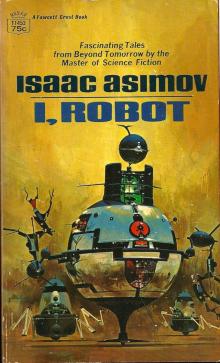 I, Robot
I, Robot Puzzles of the Black Widowers
Puzzles of the Black Widowers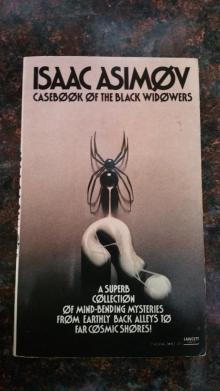 Casebook of the Black Widowers
Casebook of the Black Widowers The Ugly Little Boy
The Ugly Little Boy Azazel
Azazel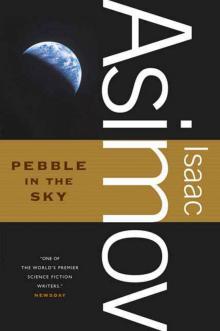 Pebble in the Sky
Pebble in the Sky Foundation and Empire
Foundation and Empire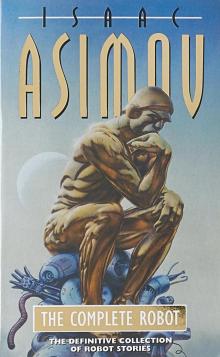 The Complete Robot
The Complete Robot Fantastic Voyage
Fantastic Voyage Foundation and Earth
Foundation and Earth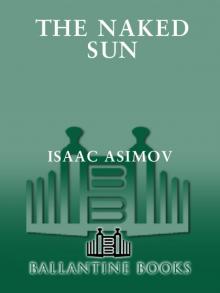 The Naked Sun
The Naked Sun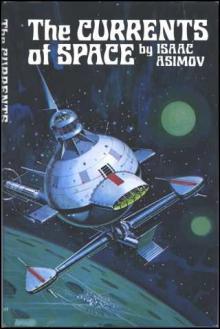 The Currents of Space
The Currents of Space Foundation's Edge
Foundation's Edge The Robots of Dawn
The Robots of Dawn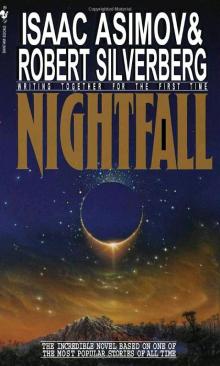 Nightfall
Nightfall The Caves of Steel
The Caves of Steel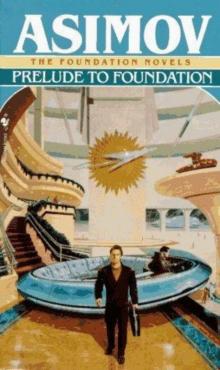 Prelude to Foundation
Prelude to Foundation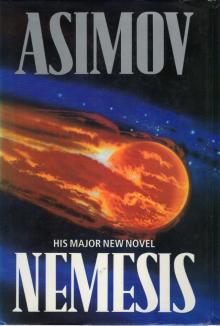 Nemesis
Nemesis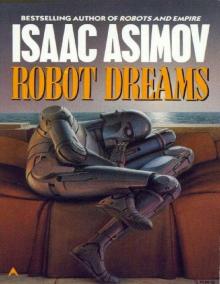 Robot Dreams
Robot Dreams More Tales of the Black Widowers
More Tales of the Black Widowers The Complete Stories
The Complete Stories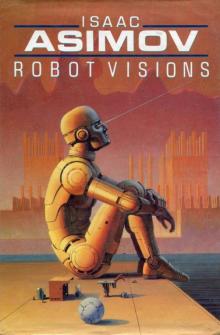 Robot Visions
Robot Visions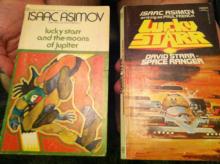 Lucky Starr And The Moons of Jupiter
Lucky Starr And The Moons of Jupiter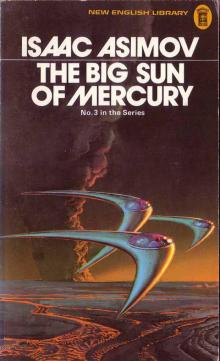 Lucky Starr and the Big Sun of Mercury
Lucky Starr and the Big Sun of Mercury The End of Eternity
The End of Eternity The Bicentennial Man and Other Stories
The Bicentennial Man and Other Stories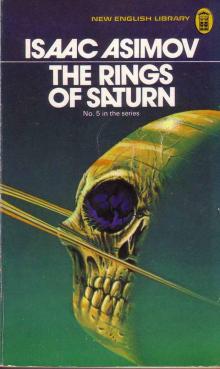 Lucky Starr And The Rings Of Saturn
Lucky Starr And The Rings Of Saturn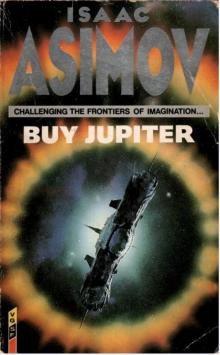 Buy Jupiter and Other Stories
Buy Jupiter and Other Stories Forward the Foundation
Forward the Foundation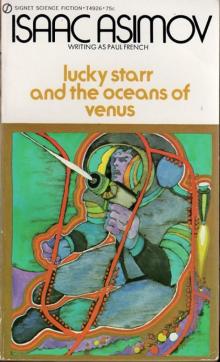 Lucky Starr and the Oceans of Venus
Lucky Starr and the Oceans of Venus The Positronic Man
The Positronic Man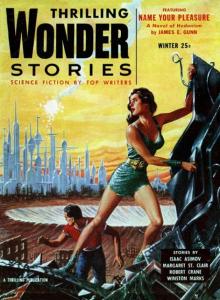 The Portable Star
The Portable Star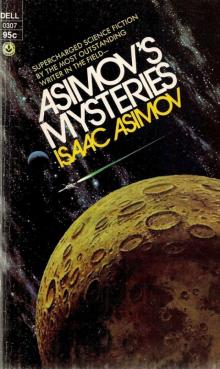 Asimovs Mysteries
Asimovs Mysteries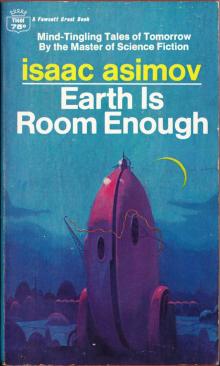 Earth Is Room Enough
Earth Is Room Enough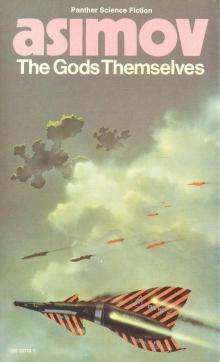 The Gods Themselves
The Gods Themselves Youth
Youth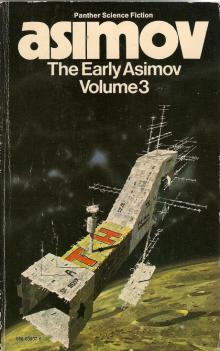 The Early Asimov Volume 3
The Early Asimov Volume 3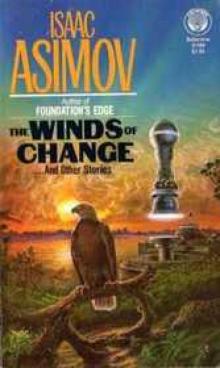 The Winds of Change and Other Stories
The Winds of Change and Other Stories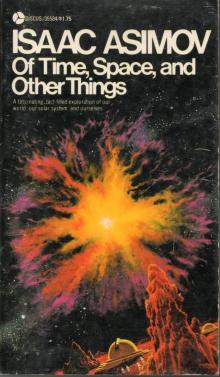 Of Time, Space, and Other Things
Of Time, Space, and Other Things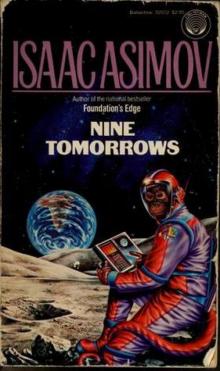 Nine Tomorrows
Nine Tomorrows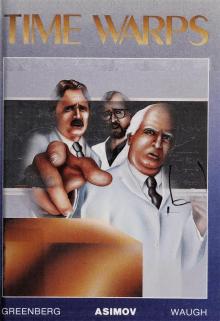 Time Warps
Time Warps Robots and Empire
Robots and Empire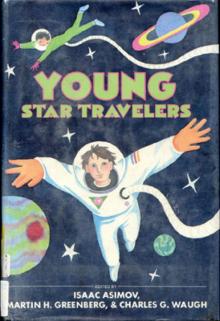 Young Star Travelers
Young Star Travelers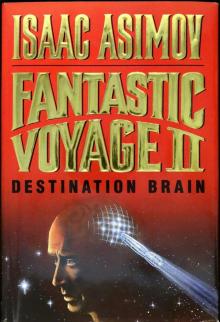 Fantastic Voyage II: Destination Brain
Fantastic Voyage II: Destination Brain Second Foundation
Second Foundation The Rest of the Robots
The Rest of the Robots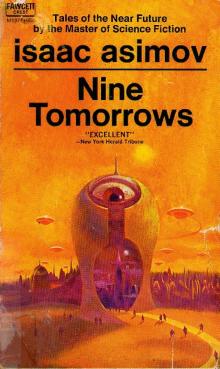 NINE TOMORROWS Tales of the Near Future
NINE TOMORROWS Tales of the Near Future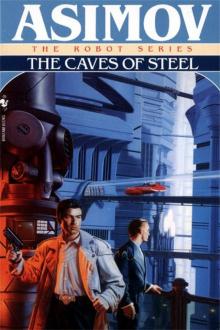 Daneel Olivaw 1 - The Caves of Steel
Daneel Olivaw 1 - The Caves of Steel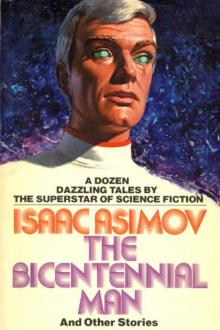 THE BICENTENNIAL MAN
THE BICENTENNIAL MAN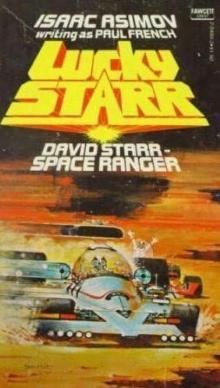 David Starr Space Ranger (lucky starr)
David Starr Space Ranger (lucky starr)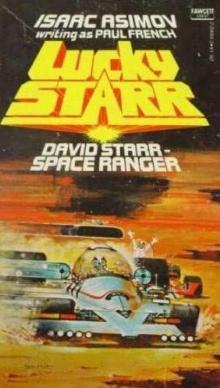 David Starr Space Ranger (ls)
David Starr Space Ranger (ls)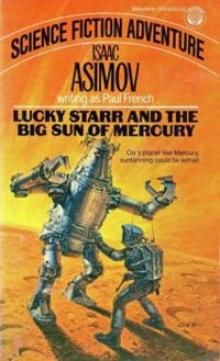 Lucky Starr And The Big Sun Of Mercury ls-4
Lucky Starr And The Big Sun Of Mercury ls-4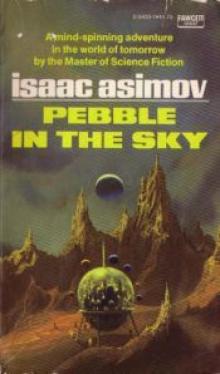 Pebble In The Sky te-1
Pebble In The Sky te-1 Asimov’s Future History Volume 9
Asimov’s Future History Volume 9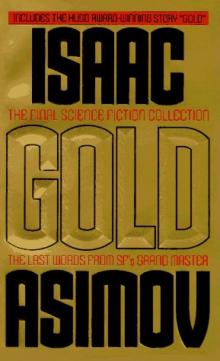 Gold: The Final Science Fiction Collection
Gold: The Final Science Fiction Collection Foundation and Earth f-7
Foundation and Earth f-7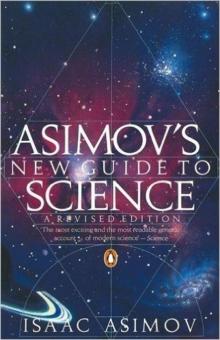 Asimov's New Guide to Science
Asimov's New Guide to Science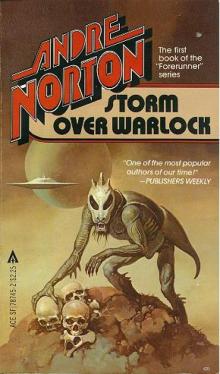 STORM OVER WARLOCK
STORM OVER WARLOCK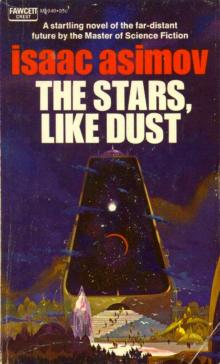 Stars, Like Dust
Stars, Like Dust Norby The Mixed-Up Robot
Norby The Mixed-Up Robot Found!
Found!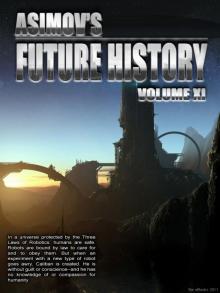 Asimov’s Future History Volume 11
Asimov’s Future History Volume 11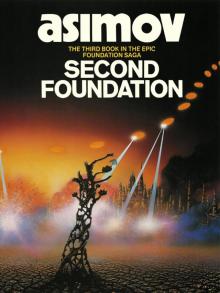 Second Foundation f-5
Second Foundation f-5 Asimov’s Future History Volume 15
Asimov’s Future History Volume 15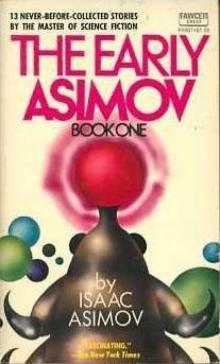 The Early Asimov. Volume 1
The Early Asimov. Volume 1 Secound Foundation
Secound Foundation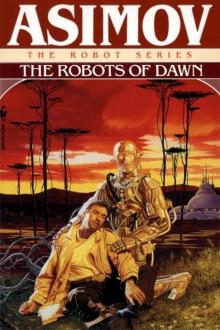 Daneel Olivaw 3 - The Robots of Dawn
Daneel Olivaw 3 - The Robots of Dawn Asimov’s Future History Volume 6
Asimov’s Future History Volume 6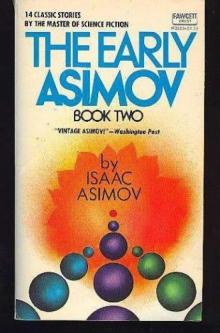 The Early Asimov. Volume 2
The Early Asimov. Volume 2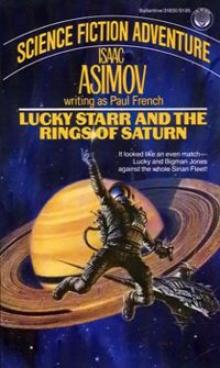 Lucky Starr And The Rings Of Saturn ls-6
Lucky Starr And The Rings Of Saturn ls-6 100 Malicious Little Mysteries
100 Malicious Little Mysteries Forward the Foundation f-2
Forward the Foundation f-2 I.Asimov: A Memoir
I.Asimov: A Memoir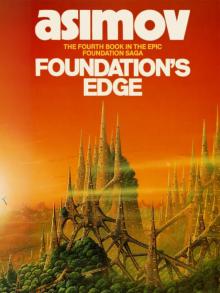 Foundation's Edge f-6
Foundation's Edge f-6 Lucky Starr and the Pirates of the Asteroids ls-2
Lucky Starr and the Pirates of the Asteroids ls-2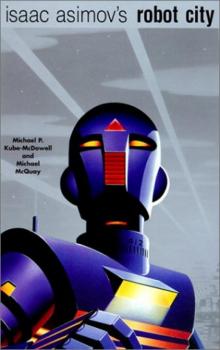 Robot City 1 & 2
Robot City 1 & 2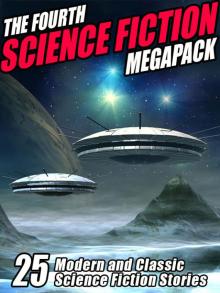 The Fourth Science Fiction Megapack
The Fourth Science Fiction Megapack Asimov’s Future History Volume 16
Asimov’s Future History Volume 16 The Dim Rumble
The Dim Rumble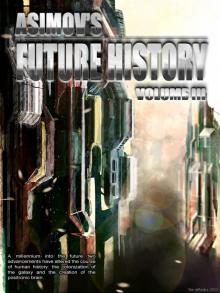 Asimov's Future History Volume 3
Asimov's Future History Volume 3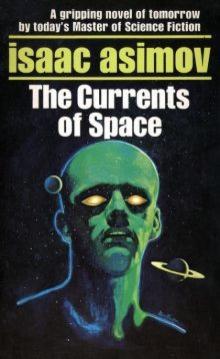 The Currents Of Space te-3
The Currents Of Space te-3 Asimov’s Guide To Shakespear. Volume 1
Asimov’s Guide To Shakespear. Volume 1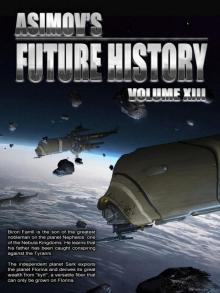 Asimov’s Future History Volume 13
Asimov’s Future History Volume 13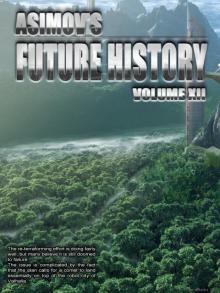 Asimov’s Future History Volume 12
Asimov’s Future History Volume 12 The Secret Sense
The Secret Sense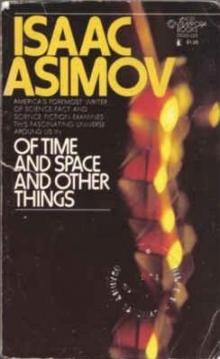 Of Time and Space and Other Things
Of Time and Space and Other Things Norby tnc-2
Norby tnc-2 Norby The Mixed-Up Robot tnc-1
Norby The Mixed-Up Robot tnc-1 Misbegotten Missionary
Misbegotten Missionary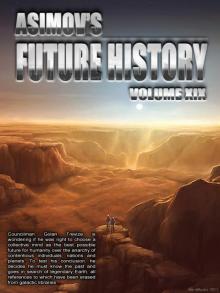 Asimov’s Future History Volume 19
Asimov’s Future History Volume 19 Fantastic Voyage II: Destination Brain fv-2
Fantastic Voyage II: Destination Brain fv-2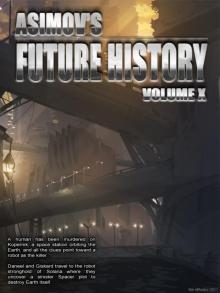 Asimov’s Future History Volume 10
Asimov’s Future History Volume 10 Asimov's Future History Volume 2
Asimov's Future History Volume 2 Feeling of Power
Feeling of Power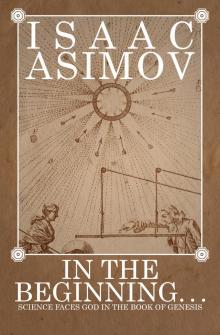 In the Beginning
In the Beginning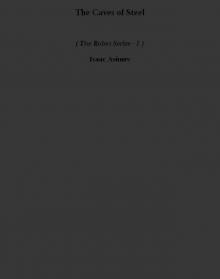 The Caves of Steel trs-1
The Caves of Steel trs-1 Asimov's Future History Vol 2
Asimov's Future History Vol 2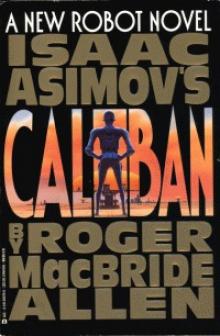 Caliban c-1
Caliban c-1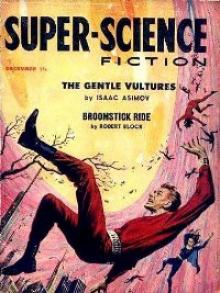 The Gentle Vultures
The Gentle Vultures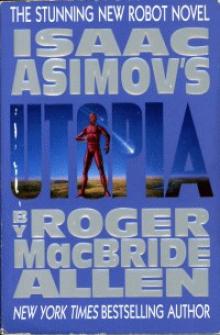 Utopia c-3
Utopia c-3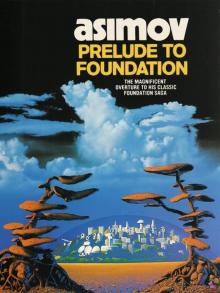 Prelude to Foundation f-1
Prelude to Foundation f-1 Short Stories Vol.1
Short Stories Vol.1 Asimov’s Future History Volume 8
Asimov’s Future History Volume 8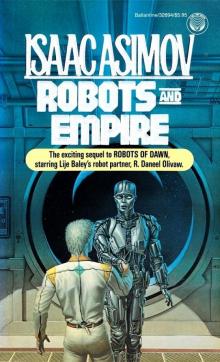 Daneel Olivaw 4 - Robots and Empire
Daneel Olivaw 4 - Robots and Empire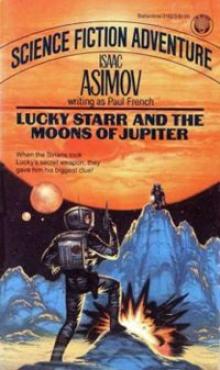 Lucky Starr The And The Moons of Jupiter ls-5
Lucky Starr The And The Moons of Jupiter ls-5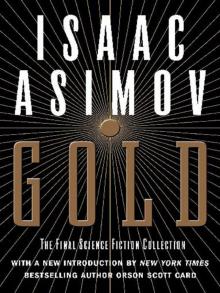 Gold
Gold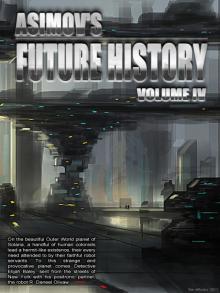 Asimov’s Future History Volume 4
Asimov’s Future History Volume 4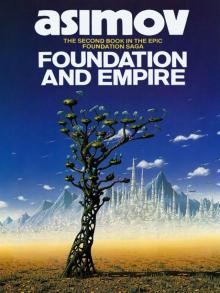 Foundation and Empire f-4
Foundation and Empire f-4 Potential
Potential Asimov’s Future History Volume 14
Asimov’s Future History Volume 14 Asimov’s Future History Volume 7
Asimov’s Future History Volume 7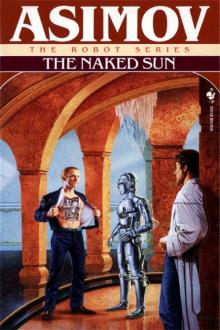 Daneel Olivaw 2 - The Naked Sun
Daneel Olivaw 2 - The Naked Sun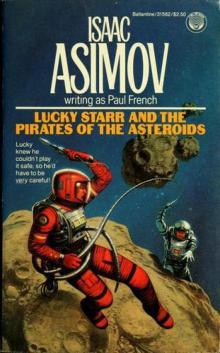 Lucky Starr and the Pirates of the Asteroids
Lucky Starr and the Pirates of the Asteroids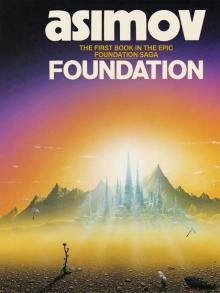 Foundation f-3
Foundation f-3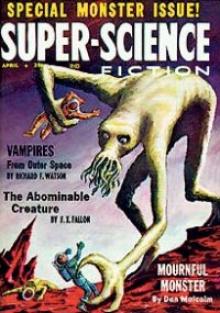 All the Troubles of the World
All the Troubles of the World Cleon the Emperor
Cleon the Emperor Asimov's Future History Volume 5
Asimov's Future History Volume 5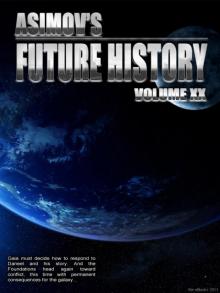 Asimov’s Future History Volume 20
Asimov’s Future History Volume 20 Robots and Empire trs-4
Robots and Empire trs-4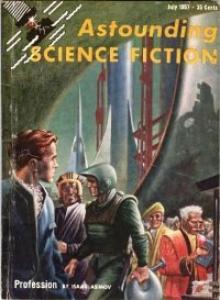 Profession
Profession It's Been a Good Life
It's Been a Good Life The Robots of Dawn trs-3
The Robots of Dawn trs-3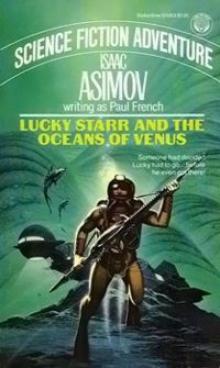 Lucky Starr And The Oceanf Of Venus ls-3
Lucky Starr And The Oceanf Of Venus ls-3 The Naked Sun trs-2
The Naked Sun trs-2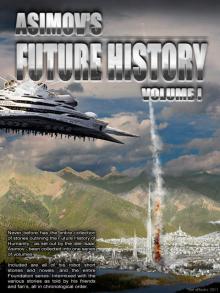 Asimov's Future History Volume 1
Asimov's Future History Volume 1